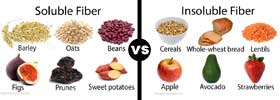Difference between Ad and Add
Key Difference: Even though Ad and Add look and sound very similar, in fact, they are almost exactly the same, in reality though they are two completely different words with completely different meanings. Ad refers to advertisement, a type of marketing technique whereas add refers to addition, i.e. adding things together.
 It often happens that one comes across two words that are very similar to each other, such as Ad and Add. The only difference between the two words is of a single letter, an extra d. However, as is often the case, these types of words often have completely different meanings from each other. It is the same with these two words. Even though Ad and Add look and sound very similar, in fact, they are almost exactly the same, in reality though they are two completely different words with completely different meanings.
It often happens that one comes across two words that are very similar to each other, such as Ad and Add. The only difference between the two words is of a single letter, an extra d. However, as is often the case, these types of words often have completely different meanings from each other. It is the same with these two words. Even though Ad and Add look and sound very similar, in fact, they are almost exactly the same, in reality though they are two completely different words with completely different meanings.
Ad is short for advertisement. An advertisement is a type of marketing in which a brand tries to connect with the audience in order to promote the brand or its product. There are many difference types of advertisements, such as video, audio or photos. Advertisements are often utilized through various mediums such as traditional media, which includes newspapers, magazines, television, radio, outdoor advertising or direct mail; Change in content creation and how led advertisements to evolve and change to include new media such as search results, blogs, social media, websites or text messages.
Ads are fairly common and most people would have come across them in some form or another. However, ad is a colloquial term, which means that it is not used everywhere as a short form. The usage of ad is also very informal, which means that in official situations, most people will call ads by their full names, such as advertisements.
 Add, on the other hand, refers to addition, which is part of mathematics. It is also used in English to refer to combining or adding things together, such as to add an ingredient to a recipe, or to add a remark to the conversation. In all instances, the term refers to joining or combining, whether that is numbers or other things.
Add, on the other hand, refers to addition, which is part of mathematics. It is also used in English to refer to combining or adding things together, such as to add an ingredient to a recipe, or to add a remark to the conversation. In all instances, the term refers to joining or combining, whether that is numbers or other things.
Hence, as it can be seen, even though the two terms look and sound similar, they are in fact not. The two terms are completely different and have completely different meanings. Ad refers to advertisement, whereas add refers to addition. Another thing to note is that Ad is a noun, i.e. it is a name for a thing, whereas add is a verb, which means that it is nearly always used in the context of to add something or adding something to something.
An easy way to distinguish between the two is to note that we add a D in add, hence its addition.
Comparison between Ad and Add:
|
|
Ad |
Add |
|
Stands for |
Advertisement |
Addition |
|
Definition (Oxford Dictionaries) |
An advertisement. ‘the latest television lager ad’ |
Join (something) to something else so as to increase the size, number, or amount. Put in (an additional element, ingredient, etc.) Put together (two or more numbers or amounts) to calculate their total value. Say as a further remark. |
|
Part of |
Marketing |
Commonly Mathematics |
|
Etymology |
Mid 19th century: abbreviation of advertisement |
Late Middle English: from Latin addere, from ad- ‘to’ + the base of dare ‘put’. |
|
Type |
Noun |
Verb |
|
Examples |
There is a new ad on TV. Nike has run a full-page ad in the newspaper. The new ad spreads a heart-warming social message. He put an ad in the paper to sell his car. |
If you add 1 and 1, the result is 2. Add an egg to the bowl. ‘He not here’, she added. The numbers didn’t quite add up. |
Reference: Oxford Dictionaries (Ad, Add), Wikipedia (Ad, Add), Writing Explained, Word Eng Image Courtesy: really-learn-english.com, youtube.com









Add new comment